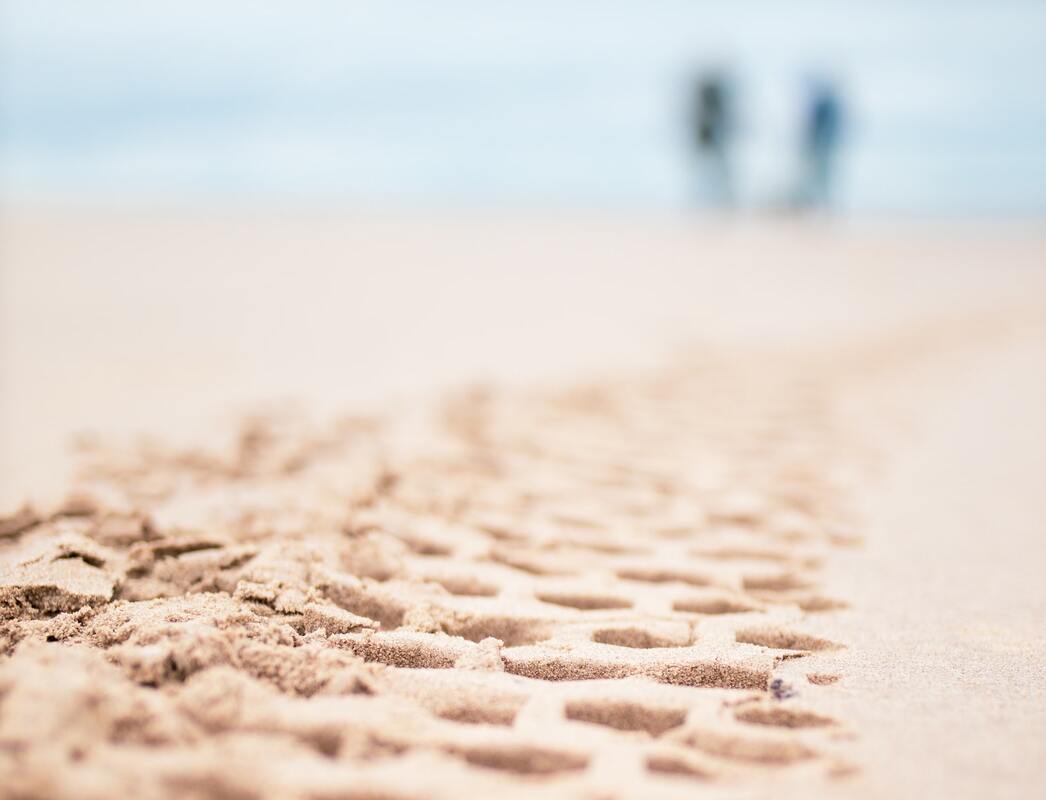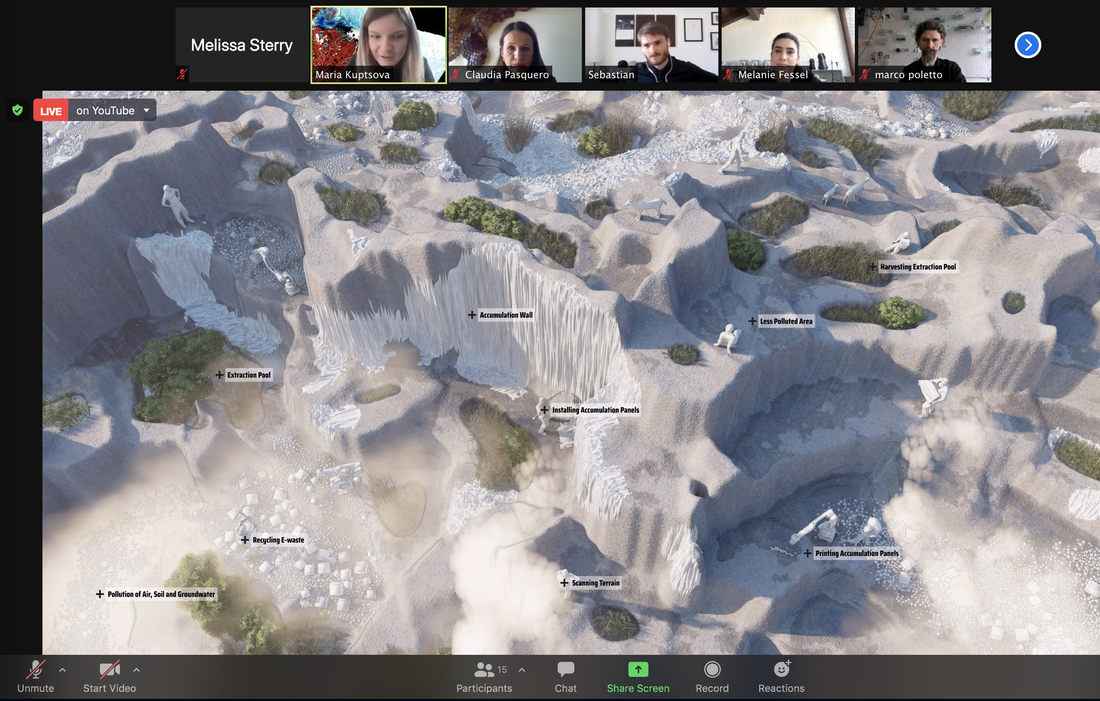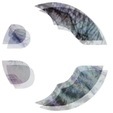|
Image by Jonathan Farber on Unsplash Though, at the macro-scale, the problem of plastics flowing into the world's oceans has been well-documented, until recently, at the nano and micro scale it remained all but unknown. Several seminal papers on the issue having been published this past 24 months has helped raise visibility of the issue. However, much is the work still to be done to raise awareness of the scale and nature of this complex problem across industry, academia, and the public at large. Published on April 6th, 'Insights Report: 2030 | Invisible Ocean Pollutants from our Roads', authored by Dr. David Greenfield and myself, with assistance from researcher Natalie Ibbott and graphic designer Jacob Arney, summarises the scale of the nano and micro plastics pollution caused by tyres, together with some of the ways in which the problem may be addressed in the coming decade and beyond.
The product of several months of research, including an extensive literature review, a roundtable attended by twenty leaders from several STEM fields including toxicology and ecotoxicology, information communications technologies, and science and wider policy, among others, together with a survey and expert interviews, the 40-page report, which was commissioned by SUEZ group, is available open access via a download on their site. In particular, I'd like to thank friends and peers for their invaluable contribution to the research insights, including Dr. Richard Miller, Assoc. Director of Connected Places Catapult and founder of Miller-Klein Associates; Olivier de Matos, General Secretary at the European Centre for Ecotoxicology and Toxicolgy of Chemicals [ECETOC]; Dr. Peter van Manen, Vice President at Living PlanIT; Nuno Silva, Chief Scientific Officer at UnifAI Technology; and Emily Penn, co-founder and leader at eXXpedition. Extracts from the report "Tyre Wear Particles (TWP) are the abraded surface of vehicle tyres, between 1nm to 0.5mm, and deposited on the road surface or blown into surrounding environments. TWP comprise a cocktail of natural rubber, synthetic compounds, fillers, antioxidants, antiozonants and curing systems. Due to the mix of materials, they are classed as a microplastic. The term “Invisible Ocean Pollutant” has been coined because of the physical invisibility of TWP and that few people know TWP are a major source of pollution in the oceans. The conclusion from the research undertaken is that TWP are a major environmental pollutant and this is only starting to become recognised as an issue. Annually between 28% (17,640 tonnes) and 34% (23,120 tonnes) of TWP are entering the UK marine environment. Globally, this is a major environmental concern, where it is currently estimated that up to 1.03 million tonnes of microplastic will be in the oceans by 2030 (if using the UK assumption of 28-34%, 288,400 – 350,200 tonnes of TWP), and more than doubling to over 2.5 million tonnes (700,000 – 850,000 tonnes of TWP) by 2050. This Insight Report summarises the detailed research and discussion contained within the adjoining Annexes and give recommendations to the resource management sector on some of the potential actions available to address and to mitigate the “Invisible Ocean Pollutants” that are Tyre Wear Particles. Many factors involved in the design, fabrication, production and maintenance of tyres, vehicles, roads and other transport networks, in combination with shifts in citizen behaviour, will influence the extent to which we are able to mitigate our invisible pollution problems of the present. The five factors are: 1. Design of tyres 2. Design of cars 3. Design of roads and their water management 4. Driving skills and training 5. Improved interception at source At present, it appears that plastic pollution is not the primary driver of material sourcing and wider innovations in the tyre industry, with the need to address issues including climate change, vehicle efficiency and performance, driver safety and market competitiveness taking clear precedence. However, innovations with an initial intent to address one problem often address others, and several of the latest tyre sourcing, design, production and maintenance concepts recently presented by leaders in the tyre sector have the capacity to help mitigate the problem of invisible plastic pollution. There needs to be far more awareness among local authorities, real estate developers, industry and governments more generally, of the potential role of drainage and other urban and peri-urban infrastructure in mitigating the invisible pollution problem. Solutions will need to be approached both from a financial or regulatory incentive perspective and design and life-cycle perspective, as well as involving leaders from governments, the waste, chemical, civil engineering and automotive industries, water treatment, urban infrastructure planning, technology, marine and freshwater biology, and wider environmental science sectors." Read the report in full here.
0 Comments
Image: Oliver Roos on Unsplash Authored by fellow futurists David Houle, Gerd Leonard and Glen Hiemstra the Fork in the Road manifesto invites they working in the foresight professions to utilise their influence to address critical social and environmental issues. Having been invited to join the manifesto signatories, I joined peers including David Brin, Richard Watson, Joyce Gioia, together with a growing number of others from around the world in supporting the endeavour.
Extracts from the manifesto "Humanity has entered a critical moment in its history. The coming decade is a time of great historical significance, and the decisions humanity collectively makes in the next 10 years may well determine whether our future is bright and prosperous, or whether it leads to misery and perhaps even our eventual demise as a species. The great thinker, designer and futurist R. Buckminster Fuller (‘Bucky’) wrote several seminal books describing this pivotal moment in history, which he called the Fork in the Road. Humanity has entered the decisive decade and stands at perhaps the greatest, most monumental junction in the history of our species. While many forces challenge the future, we recognize these 4 overarching issues:
The initiators and initial signatories of this manifesto agree and hereby declare the urgent need to raise global awareness, to engage in wide education and debate, and to take decisive actions on these key issues in order to bring about fundamental shifts in all areas of human endeavour. We must start acting based on solid science, deep foresight, collective ethics and practical wisdom, and ask not what the future may bring but what future we want, and how we will create it. Rather than tacitly agreeing to our seemingly inevitable future, we must actively create our preferred future. The Fork In The Road Project commits to dramatically raising awareness at this critical moment in history, and to influencing decision makers around the globe to make the necessary changes needed so that humanity will flourish going forward. We commit to elevating the discourse and decision making of all to this vision of urgency, and the opportunity we have in this decade to ensure humanity’s future. We commit to telling stories about the urgency of this decade in assuring a long-term future for humanity and all life. We urge all who agree to step up, to sign and share this manifesto to redirect humanity toward a positive future." Read the manifesto in full here. On March 25th March I had the pleasure to join the University of Innsbruck's Synthetic Landscape Lab Final Thesis jury together with the lab's director, Prof. Claudia Pasquero and members including Maria Kuptsova who supervised the research projects, and fellow jurors cofounder and director of ecoLogic Studio Dr. Marco Poletto and ETH Zurich's Melanie Fessel. Working within the investigative conceptual framework of the lab, each of the projects presented explored the potentialities of an ecological intelligence through the convergence of all processes and systems - humans, animal, microbiological, technological and digital, that are currently accelerating the transformation of our Urbansphere. 'Agbogbloshie - The Landfill as Landscape' by Sebastian Partoll [seen above and below] examined the possibility of harvesting toxic chemicals that are leached when electronic goods, such as laptops, televisions, and smart phones, are disassembled, through the use of synthetic lichen-like growths in the landscape. Proposed as a means of mitigating a problem [pollution] while offering new economic and social opportunities [i.e. revenue from the sale of the chemicals harvested], the project was beautiful illustrated and animated, both in the live-stream presentation itself, and in Partoll's final dissertation. 'Atlas - Future Alpine Metropolitan Landscape' - Daniel Stiletto [seen second below] explored how augmentation of an Alpine landscape might simultaneously mitigate the issue of flooding, debris falls, and other geological failures, while harvesting water for both residential and industrial use. Through Stiletto's synthetic hydrological lens a critical problem has morphed into an ambitious, but through-provoking solution. Another elegantly executed project, Stiletto particularly impressed jurors with his sublime illustrations and unique visual style. 'The Physarum Game' by Thierry Lopes [seen bottom], spliced biological computing logic with electronic computing practice to create a game that educates citizens on how changes in the landscape human and non-human impact upon regional hydrology and thus water supply. Having chosen Cape Town as the locale for his concept, Lopes' exhibited a robust grasp of research practice, original thinking in his approach, as, as did Stiletto and Partoll, the ability to take on board the advisories of both course jurors and supervisors to deliver noteworthy works that met the highest standards in research and practice in their respective discipline. Well done to Sebastian, Daniel, and Thierry, together with Claudia, Maria, and the Synthetic Landscape Lab team, and fellow course jurors on, yet again, raising the bar in this critical research and practice domain. |
AuthorMelissa Sterry, PhD, chartered design scientist, systems theorist, biofuturist, and serial founder inc. Bionic City® Bionic CityAsking the question "how would nature design a city" since 2010.
Archives
October 2023
Categories#bionics
#biotech #biodesign #bioscience #biomimetics #biotechnology #bioengineering #bioinnovation #bioaesthetics #biorevolution #bioenterprise #biosystems #biocreative #biofuturism #biofutures #biocentric #biofacture #biotecture #biovation #biofiction #biourban #biocities #biolab #bioart #STEM
#STEAM #STEAMED #STEMcomms #STEAMcomms #STEAMEDcomms © Bioratorium Limited & Melissa Sterry
2021 All Rights Reserved |



 RSS Feed
RSS Feed

